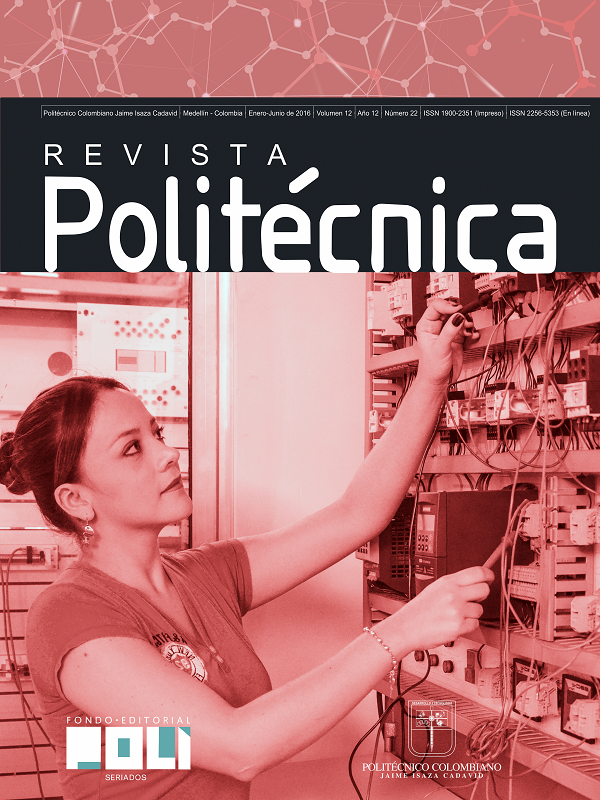Virtual keyboard for people with neuromuscular diseases operated through an acoustic event
Keywords:
Augmentative and Alternative Communication, Accessibility, Support ProductsAbstract
Persons with severe neuromuscular diseases have lost the ability to communicate verbally and in writing. The use of classic peripherals to try to facilitate communication, it is impossible due to diseases such as muscular dystrophy, paralysis, Friedreich's ataxia and disorders of the spine causing in the bodies of the people who suffer this diseases, effects such as spasticity, spasms, poor coordination, restricted movement and loss of muscle strength. The augmentative and alternative communication (AAC), is a complementary option or total replacement speech, allowing break the communication and interaction barrier of these people with society. In this article, the development of a virtual system keyboard it shows as a method using an acoustic event to select the desired character and a group similar to the keyboard of a classic cell phone to optimize system efficiency. In addition, a usability analysis is presented to validate it.Article Metrics
Abstract: 628 HTML (Español (España)): 217 PDF (Español (España)): 254References
World Health Organization, “World report on disability 2011,” 2011. [Online]. Available: http://www.who.int/disabilities/world_report/2011/report.pdf.
Kandel, Eric R., James H. Schwartz, and Thomas M. Jessell, eds. Principles of neural science. Vol. 4. New York: McGraw-hill, 2000..
Departamento Administrativo. Nacional de Estadística, “Discapacidad Total Nacional,” 2007. [Online]. Available: http://www.dane.gov.co/files/investigaciones/discapacidad/Total_nacional.xls.
Departamento Administrativo. Nacional de Estadística “Tasa de Desempleo,” 2015. [Online]. Available: http://www.dane.gov.co/index.php/mercado-laboral/empleo-y-desempleo.
C. Arboleda, E. García, A. Posada, and R. Torres, “Diseño y construcción de un prototipo de
interfaz cerebro-computador para facilitar la comunicación de personas con discapacidad motora,” Rev. EIA, 2009.
M. Adjouadi, A. Sesin, M. Ayala, and M. Cabrerizo, “Remote eye gaze tracking system as a computer interface for persons with severe motor disability,” 2004.
K. Z. Gajos, J. O. Wobbrock, and D. S. Weld, “Improving the performance of motor-impaired users with automatically-generated, ability-based interfaces,” in Proceeding of the twenty-sixth annual CHI conference on Human factors in computing systems - CHI ’08, 2008, p. 1257.
H. Koester, “Abandonment of speech recognition by new users,” Proc. RESNA, 2003.
B. Phillips and H. Zhao, “Predictors of assistive technology abandonment.,” Assist. Technol., vol. 5, no. 1, pp. 36–45, Jan. 1993.
M. J. Scherer, “The change in emphasis from people to person: introduction to the special issue on Assistive Technology,” Disability and Rehabilitation, vol. 24, no. 1–3, pp. 1–4, Jan. 2002.
S. Keates, J. Clarkson, and P. Robinson, “Investigating the applicability of user models for motion-impaired users,” in Proceedings of the fourth international ACM conference on Assistive technologies - Assets ’00, 2000, pp. 129–136.
S. Keates, P. Langdon, P. J. Clarkson, and P. Robinson, “User Models and User Physical Capability,” User Model. User-adapt. Interaction. vol. 12, no. 2–3, pp. 139–169, Jun. 2002.
C. Law, A. Sears, and K. Price, “Issues in the categorization of disabilities for user testing,” Procedures HCII, 2005.
P. E. Alant and M. J. Bornman, “Augmentative and Alternative Communication,” South African Family Practice, vol. 15, no. 5. .
H. Petrie, G. Weber, and W. Fisher, “Personalization, interaction, and navigation in rich multimedia documents for print-disabled users,” IBM Syst. J., 2005.
M. F. Story, “Maximizing usability: the principles of universal design.” Assistance Technology, vol. 10, no. 1, pp. 4–12, Jan. 1998.
Treviranus, Jutta, et al. "Authoring Tool Accessibility Guidelines." The latest working draft of these guidelines for designing accessible authoring tools is available at www. w3. org/TR/WD-WAI-AUTOOLS, 1999.
T. Sullivan and R. Matson, “Barriers to use: usability and content accessibility on the Web’s most popular sites,” Proc. 2000 Conf. …, 2000.
H. Petrie, F. Hamilton, N. King, and P. Pavan, “Remote usability evaluations With disabled people,” Proc. SIGCHI Conf. Hum. Factors Comput. Syst. - CHI ’06, p. 1133, 2006.
“Projecte FRESSA 2014. Educación Especial. Diversidad funcional. Discapacidad. Jordi Lagares Roset. BESALÚ. Descripción en español.” [Online]. Available: http://www.xtec.cat/~jlagares/f2kesp.htm. [Accessed: 06-Jan-2015].
K. An, D. Kim, and J. Kim, “Development of a Virtual Keyboard System Using a Bio-signal Interface and Preliminary Usability Test,” Human-Computer Interact. Towar. Intell. …, pp. 3–9, 2013.
A. Abran, A. Khelifi, W. Suryn, and A. Seffah, “Consolidating the ISO usability models,” Proc. 11th Int. …, 2003.
J. Nielsen, L. A. Blatt, J. Bradford, and P. Brooks, “Usability Inspection,” pp. 413–414, 1994.
X. Ferré Grau, “Principios Básicos7 de Usabilidad para Ingenieros Software,” Nueva Publicación de Prueba, vol. 1, no. 1. p. 8, 05-Aug-2010.
Sánchez Álvarez, Jhon Fernando. Método de evaluación de usabilidad aplicada a productos de software que facilitan el acceso a herramientas informáticas de personas con enfermedades que afectan la motricidad. Maestría thesis, Universidad Nacional de Colombia - Sede Medellín. 2015.


 _
_


















